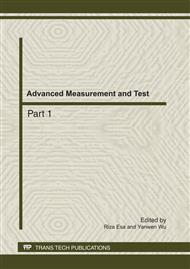p.585
p.591
p.597
p.603
p.610
p.617
p.623
p.629
p.635
Thermal Characteristics Simulation of the Commissioning Process for New Buried Heated Oil Pipelines
Abstract:
For a new buried heated oil pipeline, the temperature field of the surrounded soil is natural. Therefore the temperature is usually low in this case. For the waxy crude oil whose pour point is higher than the ground temperature, if the new pipeline transports such oil directly after heating, crude oil may gel in pipeline because its temperature decrease dramatically due to heat exchange between the fluid and the surrounded soil. Hence, in practical situation hot water is often used to warm up the pipelines for most of the new long-distance buried pipelines. Crude oil transportation is determined after the soil temperature field around the pipeline is sufficiently high and the inlet water temperature meets the requirement.
Info:
Periodical:
Pages:
610-616
Citation:
Online since:
July 2011
Authors:
Price:
Сopyright:
© 2011 Trans Tech Publications Ltd. All Rights Reserved
Share:
Citation:


